google ads optimization checklist: 10 tactics for 2025
- Chase McGowan

- 3 hours ago
- 15 min read
Many businesses pour money into Google Ads, hoping for a flood of new customers, only to see a trickle of expensive, low-quality leads. This often happens when working with large, impersonal agencies that apply a one-size-fits-all strategy to every account. These bloated firms frequently lack the specialized, hands-on attention required for true optimization, treating your budget as just another number on their spreadsheet. The truth is, impactful Google Ads management isn't about having a huge team; it's about having an expert who obsesses over the details.
This google ads optimization checklist is your roadmap to achieving the kind of granular, high-ROI results that a dedicated, expert consultant delivers. Instead of vague advice, you'll get a practical, step-by-step guide to reclaiming your ad spend and driving tangible growth. We will break down the 10 critical areas where individual expertise consistently outmaneuvers agency bloat, from refining keyword selection and boosting Quality Score to mastering bid strategies and analyzing conversion data. This isn't just another list; it’s a framework for taking direct control of your campaigns and making them profitable, proving you don't need an overpriced agency to get exceptional results. Let's begin.
1. Keyword Research and Selection
The bedrock of any successful Google Ads campaign is meticulous keyword research. This isn't just about finding terms; it's about understanding user intent. Proper keyword selection ensures your ads appear precisely when potential customers are actively searching for your solutions, maximizing relevance and dramatically improving conversion potential. It's a foundational step in any serious google ads optimization checklist.
Working with a specialist rather than a large, impersonal agency means you get a deeply strategic approach. Instead of just targeting broad, expensive terms, I focus on identifying high-intent keywords that signal a user is ready to buy. For example, an e-commerce store should prioritize "buy ergonomic office chair online" over the generic "office chair," capturing users at the final stage of their purchasing journey.
Implementation and Best Practices
To refine your keyword strategy, focus on precision and ongoing analysis. Here are actionable tips to implement:
Target Long-Tail Keywords: Focus on phrases of three or more words, like "best project management software for small teams." These have lower competition and higher conversion rates.
Analyze Competitor Keywords: Use tools like SEMrush or Ahrefs to see what’s working for your competitors and identify gaps you can exploit.
Utilize Negative Keywords: Regularly review your Search Terms Report to find and exclude irrelevant queries, preventing wasted ad spend on unqualified clicks.
To truly excel in finding high-performing terms for your campaigns, delve into how to conduct keyword research like an expert.
This hands-on, expert-led approach ensures your budget is spent efficiently, a stark contrast to the set-and-forget tactics often seen at larger agencies. For a deeper dive, explore our guide on choosing the right keywords for high-impact ads.
2. Quality Score Optimization
Quality Score is Google's rating of the quality and relevance of your keywords and PPC ads. It’s a crucial diagnostic tool that directly impacts your ad rank and cost-per-click (CPC). A high Quality Score means Google sees your ad as highly relevant to users, rewarding you with better ad positions at lower costs. It’s a cornerstone of any effective google ads optimization checklist.
Unlike large agencies that might overlook this granular metric, a specialist consultant obsesses over it. I understand that a high Quality Score is a direct result of a tightly integrated strategy, not just isolated tweaks. For example, a B2B software company can boost its score from a 6 to a 9 by ensuring the ad copy for "CRM for accountants" leads to a landing page specifically discussing CRM benefits for accounting firms, a nuance often missed by a generalist approach.
Implementation and Best Practices
To elevate your Quality Score, focus on creating a seamless and highly relevant user experience from keyword to conversion. Here are actionable tips to implement:
Create Tightly Themed Ad Groups: Structure ad groups with a small, highly related set of keywords (5-10 is ideal) to ensure your ad copy speaks directly to the search query.
Optimize Landing Page Relevance: Your landing page content must align perfectly with the ad's promise. Ensure your target keywords are present and the user experience is clear and frictionless.
A/B Test Ad Copy: Continuously test different headlines and descriptions to identify which messages resonate most with your audience, leading to a higher expected click-through rate (CTR).
This focused, expert-led process delivers sustainable cost savings and better ad performance, a stark contrast to the bloated, one-size-fits-all strategies of larger firms. To learn more about how ad performance impacts this metric, discover our guide on improving click-through rates in Google Ads.
3. Ad Copy Testing and Optimization
Even the best-targeted keywords will fail if your ad copy doesn't compel users to click. Ad copy testing is the process of creating multiple ad variations to see which headlines, descriptions, and calls-to-action resonate most with your audience. This iterative refinement is a non-negotiable step in any google ads optimization checklist for improving click-through rates (CTR) and conversions.
This is where a dedicated specialist outshines a large agency. I don’t just write one ad and let it run; I continuously test messaging with the precision of a scientist. For instance, a fitness brand might test a call-to-action like "Limited Time Offer" against "Join 50,000+ Members." Discovering that the social proof messaging increases CTR by 45% is an insight that drives real growth, a level of detail often missed by oversized teams managing dozens of accounts.
Implementation and Best Practices
To optimize your ad copy effectively, adopt a methodical testing framework. Here are actionable tips to implement:
Test One Variable at a Time: Isolate changes to headlines, descriptions, or calls-to-action to accurately attribute performance shifts.
Use Emotional Triggers: Experiment with messaging that evokes urgency ("Emergency 24/7 Service"), social proof ("Trusted by 10,000+"), or exclusivity.
Incorporate Specific Numbers: Ads with concrete data, such as "Free Shipping on Orders $50+" or "Save 25% Today," consistently outperform vague promises.
This hands-on testing culture ensures your messaging evolves and improves, a stark contrast to the static, set-and-forget campaigns often deployed by larger, less attentive agencies. The goal is to find the exact language that turns a searcher into a customer.
4. Landing Page Experience and Mobile Optimization
Your ad is only half the battle; the user’s journey after the click is where conversions happen. An optimized landing page and seamless mobile experience are critical components that directly influence your Quality Score and ROI. A fast, relevant, and easy-to-navigate page ensures the traffic you paid for doesn't immediately bounce, making it a non-negotiable step in any google ads optimization checklist.
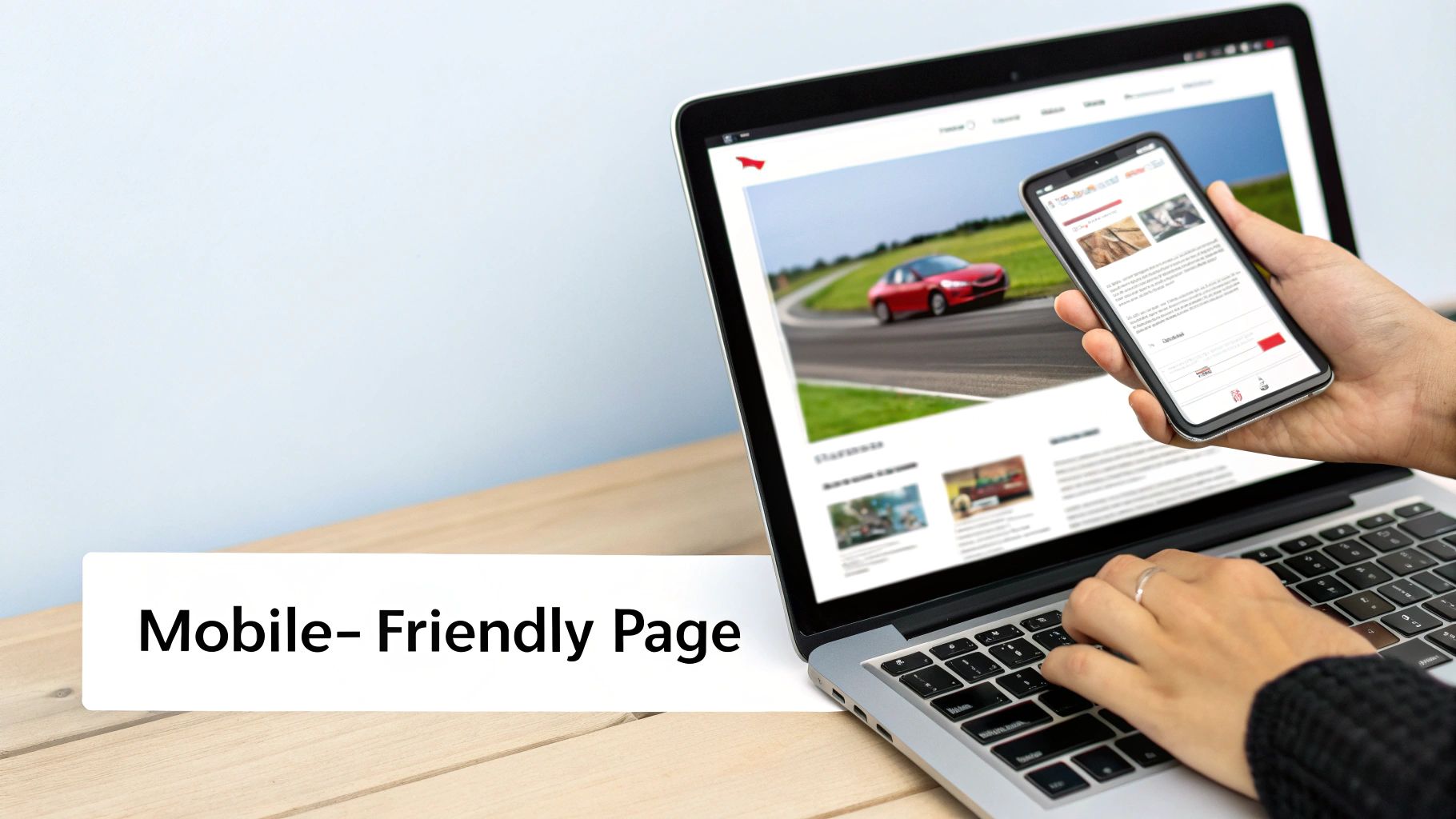
Unlike large agencies that often overlook post-click optimization, an expert consultant treats your landing page as an integral part of the campaign. I ensure there is perfect message match between your ad copy and page headline. For instance, a SaaS company saw a 40% conversion lift just by improving its page load time from 4 seconds to 1.2 seconds, proving that technical details have a massive financial impact.
Implementation and Best Practices
To turn clicks into customers, you must eliminate friction and build trust. Here are actionable tips to implement:
Ensure Message Match: The promise made in your ad must be immediately fulfilled on your landing page. The headline and core message should align perfectly.
Optimize for Speed: Use Google PageSpeed Insights to diagnose and fix issues. Aim for a mobile load time under 3 seconds; every second of delay hurts conversions.
Implement a Mobile-First Design: With the majority of traffic coming from mobile devices, your page must be designed for smaller screens first, not as an afterthought.
Add Social Proof: Build credibility with testimonials, case studies, and trust badges. An e-commerce site increased conversions by 34% simply by adding customer reviews.
Beyond mobile optimization, the ultimate success of your Google Ads hinges on how well your landing pages perform. Learn how to build a website that converts to truly maximize your advertising ROI.
5. Bid Strategy Optimization and Budget Allocation
Effective bid strategy and budget allocation are the engine of your campaign's financial performance. This isn't about simply spending money; it's about investing every dollar intelligently to achieve specific goals, whether that's maximizing sales, leads, or brand visibility. Choosing the right bid strategy ensures your ads are competitive in the right auctions, a critical component of any google ads optimization checklist.
Working with a dedicated specialist means your budget is managed with surgical precision, not just fed into an automated system. Instead of applying a one-size-fits-all "Maximize Conversions" strategy, I align bidding with your true business objectives. For instance, an e-commerce store can shift from manual CPC to a Target ROAS (Return on Ad Spend) strategy, focusing the budget on auctions that generate the highest revenue, not just the most clicks.
Implementation and Best Practices
To optimize your bidding and budget, you must be both strategic and adaptable. Here are actionable tips to implement:
Align Bidding with Goals: Use Target CPA (Cost Per Acquisition) for lead generation and Target ROAS for e-commerce. Start with Manual CPC on new campaigns to gather data before switching to automated strategies.
Allocate Budget Strategically: Dedicate 70-80% of your budget to proven, high-performing campaigns. Reserve the remaining 20-30% for testing new ad groups, keywords, and growth opportunities.
Implement Bid Adjustments: Fine-tune performance by applying bid adjustments for high-converting locations, devices, audiences, and times of day. This tells Google to bid more aggressively when a conversion is more likely.
This hands-on, expert-led approach avoids the waste common with large agencies that let automated systems run unchecked. For a detailed breakdown, explore our Google Ads budget calculator to maximize your ROI.
6. Ad Extensions and Ad Format Optimization
Ad extensions are a powerful way to expand your ad's real estate, providing more information and reasons for users to click, often without increasing your cost-per-click. They enrich your ads with details like phone numbers, site links, and special offers, which significantly boosts visibility and click-through rates. Properly leveraging extensions is a non-negotiable step in any thorough google ads optimization checklist.
Working with an individual consultant means a bespoke extension strategy tailored to your exact business goals. Unlike large agencies that apply generic templates, I ensure every available and relevant extension is strategically deployed. For example, a local restaurant can see a 31% increase in foot traffic by using location and call extensions, while a B2B software company can reduce form abandonment by 40% with a targeted lead form extension.
Implementation and Best Practices
To maximize your ad’s impact, you must use a comprehensive and relevant set of extensions. Here are actionable tips to implement:
Deploy All Relevant Extensions: Activate every extension that fits your business, including sitelinks, callouts, structured snippets, and location extensions.
Highlight Key Pages with Sitelinks: Add at least 5-6 sitelinks that direct users to high-value pages like "Pricing," "Case Studies," or specific product categories.
Promote Timely Offers: Use promotion extensions to create urgency around sales or limited-time offers, a tactic an automotive dealer used to increase visits by 18%.
Monitor and Refresh: Regularly review extension performance in your Google Ads dashboard and update them seasonally or to align with new marketing campaigns.
This granular, hands-on management ensures your ads are as compelling and effective as possible, a level of detail often lost in the high-volume environment of a larger agency.
7. Audience Targeting and Segmentation
Showing the right ad to the wrong person is a surefire way to drain your budget. Precise audience targeting ensures your message reaches users who are most likely to convert, moving beyond keywords alone. This involves segmenting users based on demographics, interests, and past behaviors, making it a critical component of any modern google ads optimization checklist.
Working with a dedicated specialist means your audience strategy is custom-built, not a generic template. Large agencies often apply broad audience settings and forget them. In contrast, I meticulously analyze your first-party data to build powerful custom and lookalike audiences. For instance, a B2B software company saw a 42% jump in qualified leads by layering in-market audiences for "IT decision-makers" with specific job title demographics, a nuance often missed by larger teams.
Implementation and Best Practices
To transform your targeting from a wide net into a surgical tool, focus on data-driven segmentation and continuous refinement. Here are actionable tips to implement:
Create Custom Audiences: Upload your best customer lists (email, phone, CRM data) to create high-value segments for retargeting or exclusion.
Leverage Similar Audiences: Use your top customer lists as a seed to find new users with similar characteristics, effectively scaling your reach to high-potential prospects.
Layer Targeting Options: Combine demographic data with in-market or affinity audiences to create highly specific segments. For example, target high-income users who are also "in-market for luxury vehicles."
This hands-on, strategic approach ensures you’re not just finding customers but finding the right customers. It’s a personalized method that delivers a higher ROAS than the one-size-fits-all approach common at bigger agencies.
8. Conversion Tracking and Data Analysis
Without accurate conversion tracking, optimizing a Google Ads account is like flying blind. This foundational element measures the valuable actions users take after clicking your ad, such as making a purchase or filling out a form. Proper implementation is what separates guessing from making informed, profitable decisions and is a non-negotiable step in any google ads optimization checklist.
Working with a dedicated specialist means this critical setup is handled with precision. Large agencies often use a one-size-fits-all tracking setup, but I customize it to your specific business goals. For a B2B client, I track not just form submissions but also demo requests and whitepaper downloads, assigning different values to each to inform a smarter bidding strategy that focuses on generating high-quality leads, not just clicks.
Implementation and Best Practices
To ensure your data is accurate and actionable, focus on comprehensive and clean tracking implementation. Here are key tips to implement:
Implement GA4 and GTM: Use Google Tag Manager (GTM) to deploy Google Analytics 4 (GA4) and Google Ads conversion tags. This streamlines management and reduces reliance on developers.
Track Multiple Conversion Types: Go beyond a single goal. Track primary conversions (purchases, lead forms) and micro-conversions (newsletter sign-ups, key page views) to understand the full customer journey.
Assign Conversion Values: Assign dynamic or static monetary values to your conversions. This allows Google's Smart Bidding algorithms to optimize for revenue and true return on investment (ROI), not just lead volume.
This hands-on, expert approach ensures your budget is directed toward actions that actually grow your business, a level of detail often missed in the standardized processes of a larger, less-invested agency.
9. Search Query Report Analysis and Negative Keywords
Your ad budget is a finite resource, and the Search Query Report (SQR) is your best tool for protecting it. This report shows the exact search terms people used before clicking your ad, offering a direct window into user behavior. Analyzing it is a non-negotiable step in any google ads optimization checklist, as it reveals where your money is being wasted on irrelevant clicks and uncovers new keyword opportunities.
Working with a dedicated specialist means this report gets the meticulous, hands-on attention it deserves. Unlike large agencies where junior account managers might glance at this data monthly, I conduct deep-dive analyses weekly. For an e-commerce client, I discovered that 15% of their budget was wasted on clicks from users searching for "free [product]". By adding "free" as a negative keyword, we immediately improved their ROAS by 18%, a quick win that larger, less-attentive teams often miss.
Implementation and Best Practices
To turn SQR insights into profit, you must be disciplined and systematic. Here are actionable tips for effective analysis:
Review Reports Weekly: Make this a non-negotiable, recurring task to quickly spot and plug budget leaks before they escalate.
Identify and Exclude Irrelevant Terms: Add high-volume, low-converting queries as negative keywords. Look for common patterns like "jobs," "careers," "free," or "reviews" if they don't apply to your business.
Discover New Keyword Opportunities: The SQR often reveals high-intent, long-tail keywords you hadn't considered. Add these valuable terms to your campaigns to capture more qualified traffic.
This granular, expert-led analysis ensures your budget is directed only toward searches with genuine conversion potential, a level of detail that is often lost in the set-and-forget models of bloated agencies. To master this process, learn how to leverage your search terms report to slash wasted spend.
10. Remarketing and Retargeting Campaigns
Remarketing is the art of re-engaging users who have already interacted with your website or content. This strategy focuses on a high-intent, familiar audience, which almost always yields higher conversion rates and lower costs per click compared to cold traffic. Including remarketing in your google ads optimization checklist is non-negotiable for recovering potentially lost conversions and nurturing prospects.

A seasoned specialist will build remarketing campaigns that do more than just follow users around the web. I create sophisticated audience segments and messaging sequences that guide them back to conversion. For instance, a B2B software company can retarget website visitors, improving its conversion rate by over 300% versus cold traffic, demonstrating the power of a second chance. This granular, strategic setup is far more effective than the generic, automated approaches often deployed by large agencies.
Implementation and Best Practices
To maximize your return from past visitors, your remarketing needs to be strategic, segmented, and relevant. Here are actionable tips to implement:
Segment Your Audiences: Create distinct lists for different behaviors, such as cart abandoners, specific product page viewers, and blog readers. This allows for highly personalized messaging.
Implement Dynamic Remarketing: For e-commerce, show users the exact products they viewed. This hyper-relevant approach is proven to increase conversions significantly.
Use Frequency Capping: Prevent ad fatigue by limiting impressions to 3-7 per user daily. This maintains a positive brand perception while staying top-of-mind.
Refine Audience Exclusions: Always exclude recent converters from your campaigns to avoid wasting budget and annoying new customers.
This focused, hands-on management ensures your remarketing budget is spent on nurturing the most valuable prospects, a level of detail that larger, volume-focused agencies often overlook.
10-Point Google Ads Optimization Comparison
Move Beyond Checklists: Get an Expert Advantage
You now have a comprehensive roadmap for transforming your Google Ads campaigns. This google ads optimization checklist isn't just a series of tasks; it’s a framework for building a powerful, efficient, and profitable advertising machine. From refining your keyword strategy and obsessing over Quality Score to meticulously analyzing search query reports and optimizing landing pages, each step is a crucial lever for improving your return on investment.
However, the true power of this checklist emerges not from simply completing the tasks, but from understanding how they interconnect. A brilliant ad copy (Step 3) will falter without a seamless landing page experience (Step 4). Likewise, sophisticated audience targeting (Step 7) is ineffective without accurate conversion tracking (Step 8) to measure its impact. Mastering Google Ads is about weaving these individual tactics into a cohesive, data-driven strategy.
The Limitation of a Static Checklist
While this guide provides the "what," sustainable growth in the hyper-competitive Google Ads landscape comes from the "why" and the "how," something a static list can't fully capture. Many businesses fall into the trap of treating optimization like a one-time project, checking boxes and moving on. This is where large, bloated agencies often fall short. They apply a templated, one-size-fits-all approach, charging premium fees for junior-level account managers to run through a generic checklist, disconnected from your unique business reality.
You aren't just another account number. Your business has specific goals, a distinct brand voice, and a unique customer journey. The difference between a campaign that just "runs" and one that truly dominates its market lies in bespoke strategy. It’s about tailoring every element, from bid strategies to ad extensions, to fit your specific market, budget, and growth objectives.
Partnering for True ROI: Expertise Over Overhead
This is where the advantage of a dedicated, expert consultant becomes clear. Instead of paying for a large agency's office space, layers of management, and high overhead, you invest directly in specialized expertise. An individual consultant acts as a strategic partner, deeply embedding themselves in your business to translate checklist items into customized, high-impact actions. It's the difference between having a mechanic follow a repair manual and having a master engineer diagnose and fine-tune your engine for peak performance.
The goal is to move beyond the checklist and into a state of continuous, intelligent optimization. By implementing the principles outlined here, you are already far ahead of the competition. The next step is to apply them with nuance, creativity, and a deep understanding of your data.
Ready to stop paying for agency overhead and start investing in specialized expertise? Come Together Media LLC offers the dedicated, one-on-one strategic partnership needed to turn this google ads optimization checklist into a powerful engine for your business growth. Schedule your free, no-commitment consultation today and discover what a truly personalized approach can do for your ROI.




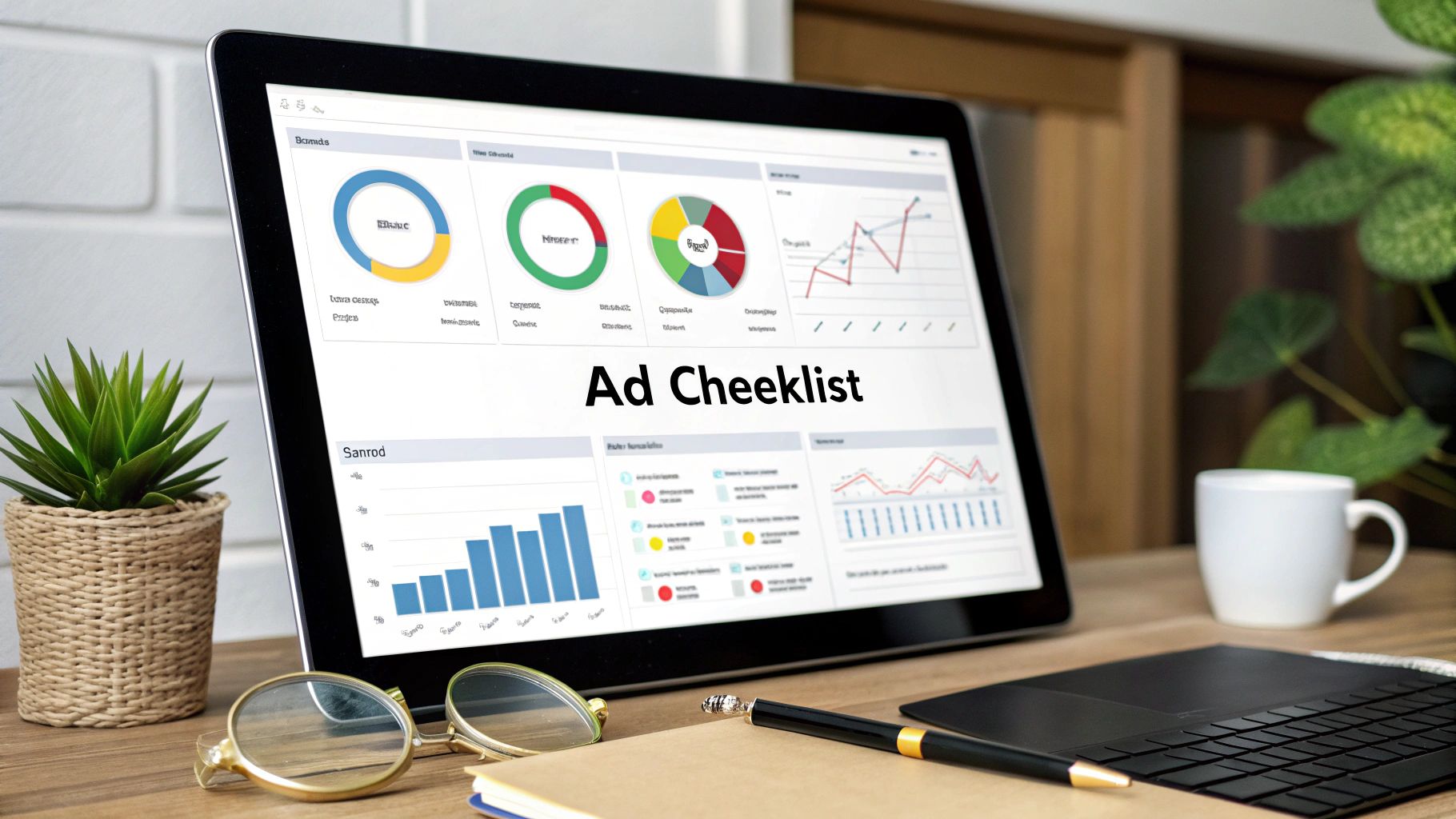






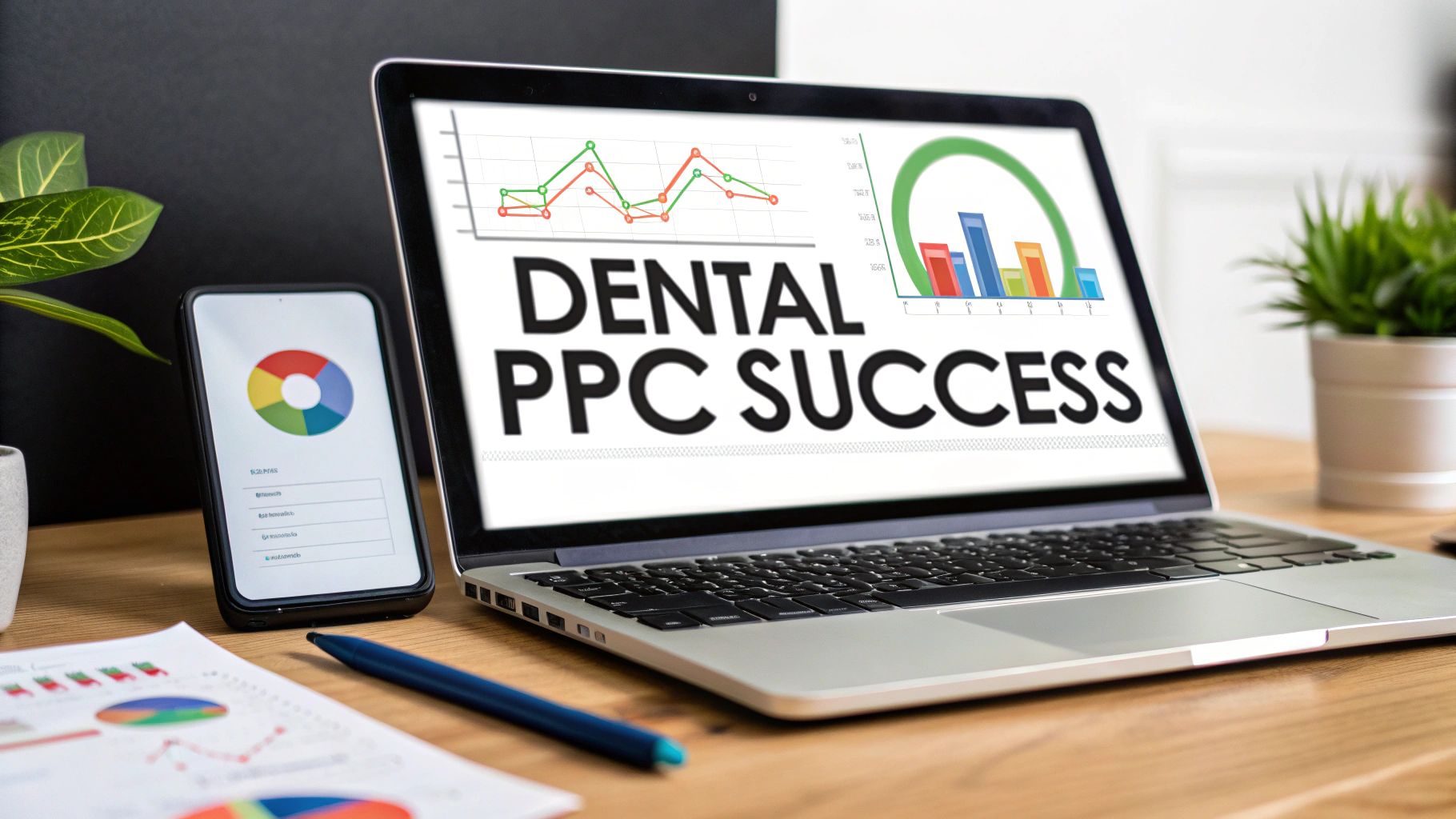
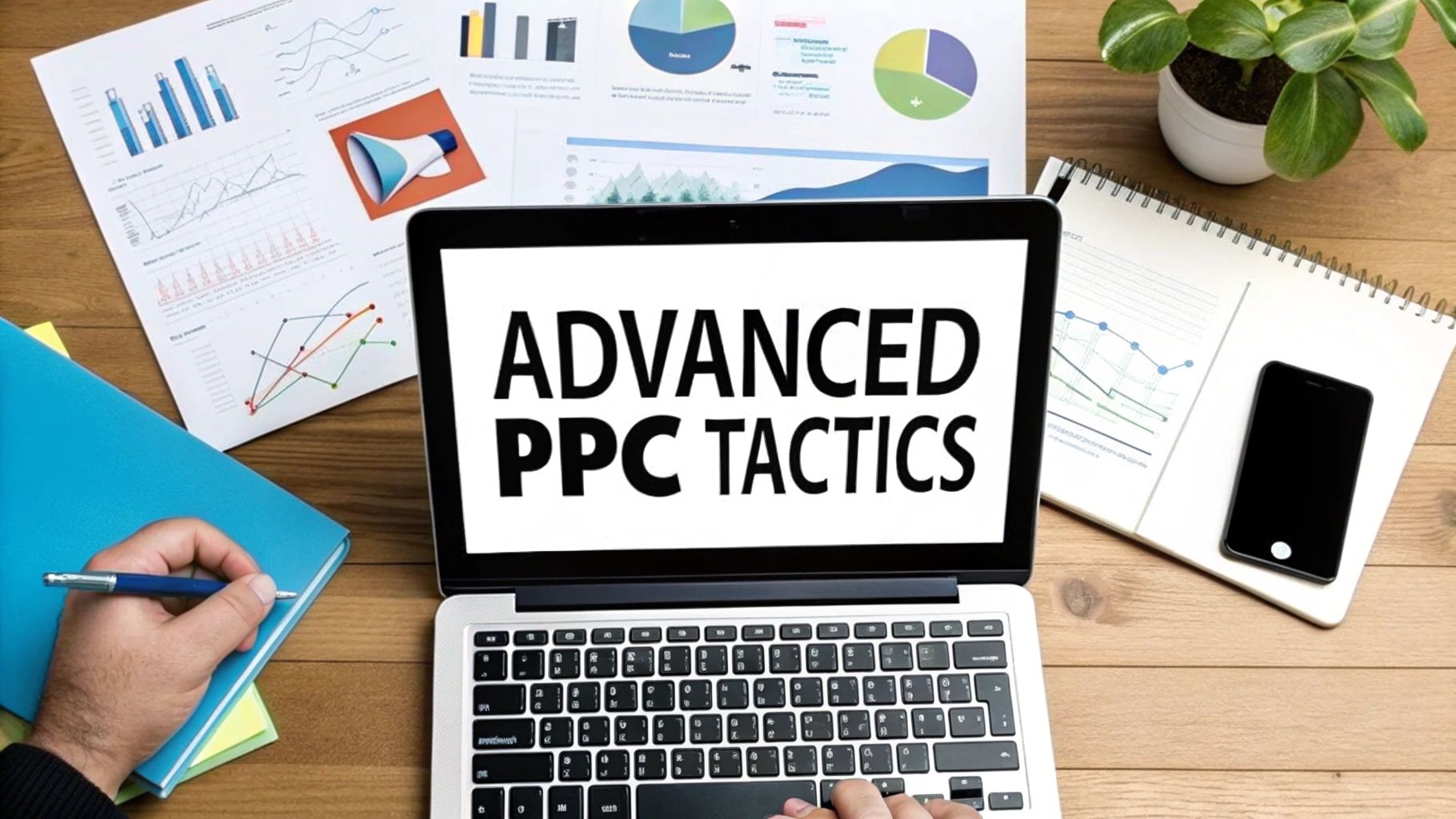
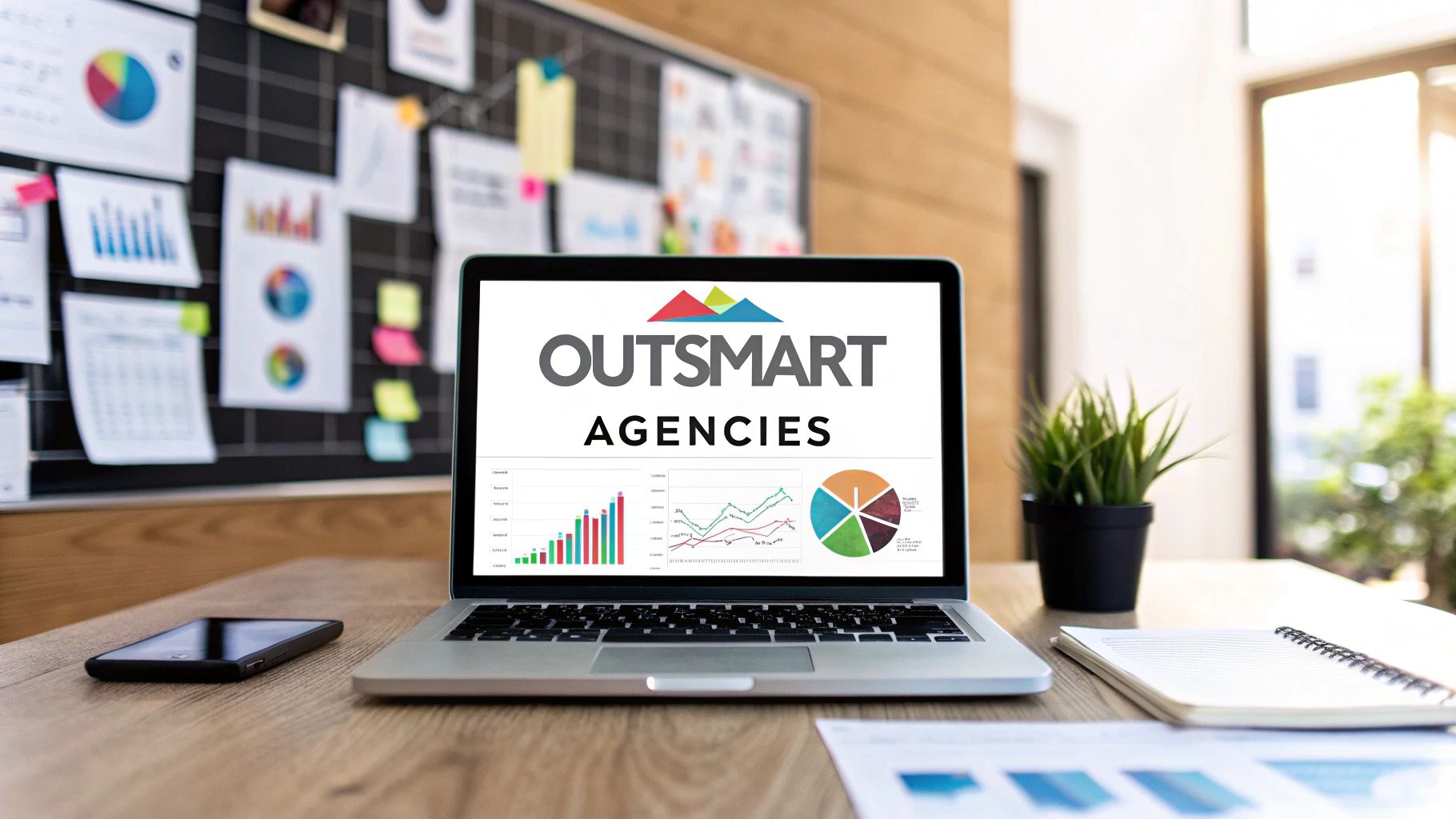
Comments